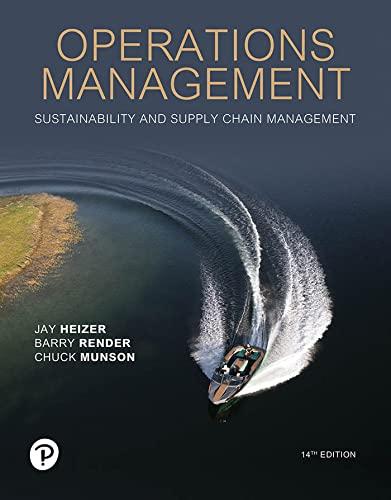Question
Op-Eds Op-edLinks to an external site. pieces, originally meaning, opposite the editorial page, but now generally understood to abbreviate Opinion Editorial pieces, are a public
Op-Eds
"Op-edLinks to an external site." pieces, originally meaning, "opposite the editorial page," but now generally understood to abbreviate "Opinion Editorial pieces," are a public way for you to express your opinions. They are written for newspapers or magazines, but not by members of the publication's editorial board. I like to use them in Critical Thinking because their design encourages you to think about how your writing should look if you wish to reach the largest audience possible. To have such an audience as your target, you have to observe P-A-C-E-D principles, and you learn a lot about constructive conformity. At its most successful, it furthers the idea of regarding argumentation as closer to performing a dance rather than participating in a war.
It's very exciting to have an op-ed piece published. When they are accepted, you are often paid for them. Plus - unlike Letters to the Editor - you even get to add a new section to your resume! The section is normally titled, "Publications." You are a bona-fide author!
Instructions
Because you have already completed the "My Issue" assignment, which was complex, this is the payoff! I hope you enjoy it.
First, if you have not yet done so, begin by reading op-ed pieces in the publication to which you are going to submit your own. Note their length, formatting, argumentative structure, and style. Since you want to be published by them, use the length of these op-eds as your guideline for length.
Use MS WordLinks to an external site. to type up your op-ed piece, using our style guidelines Download our style guidelines. That is the version to submit for our class. Afterwards, you can - and should - change the formatting to please the editor of the publication.
As you construct your op-ed piece, bring everything that we've discussed in this course to bear on your presentation.
Rid the finished product of the artificial elements that were contained in your "My Issue" assignment. For example, you would virtually never begin an actual op-ed piece by writing: "The issue I want to explore is whether or not..." You even have the leeway of adding a non-declarative sentence here that is leading. It may well be a non-rhetorical question. For example, instead of writing, "The issue I want to explore is whether or not skateboarding on campus should be legal," you could write: "Should skateboarding be legally permitted on college campuses?" Although not everything that could gain reader interest is acceptable, this kind of an exception does seem reasonable. After all, you want readers! On the other hand, the third-person voice restriction (no "I," "me," etc.) remains in place on this assignment.
Here is a strategy guideLinks to an external site., although just studying the argumentative structure of published op-ed pieces may also serve just as well in guiding you. My guide is just one of many (it works for me).
Submit your work to the publication, following any specific guidelines that they provide. Retain evidence that you have done this. Usually a screenshot is sufficient. Embed this evidence in your MS Word document before you upload this assignment.
If you do get published, you will be awarded an additional 10 points, up to 100% credit on this assignment. Let the whole class know on the General Discussion page, and give us the link!
Kindly Solve ASAP and get double thumbs up.
Step by Step Solution
There are 3 Steps involved in it
Step: 1

Get Instant Access to Expert-Tailored Solutions
See step-by-step solutions with expert insights and AI powered tools for academic success
Step: 2

Step: 3

Ace Your Homework with AI
Get the answers you need in no time with our AI-driven, step-by-step assistance
Get Started


